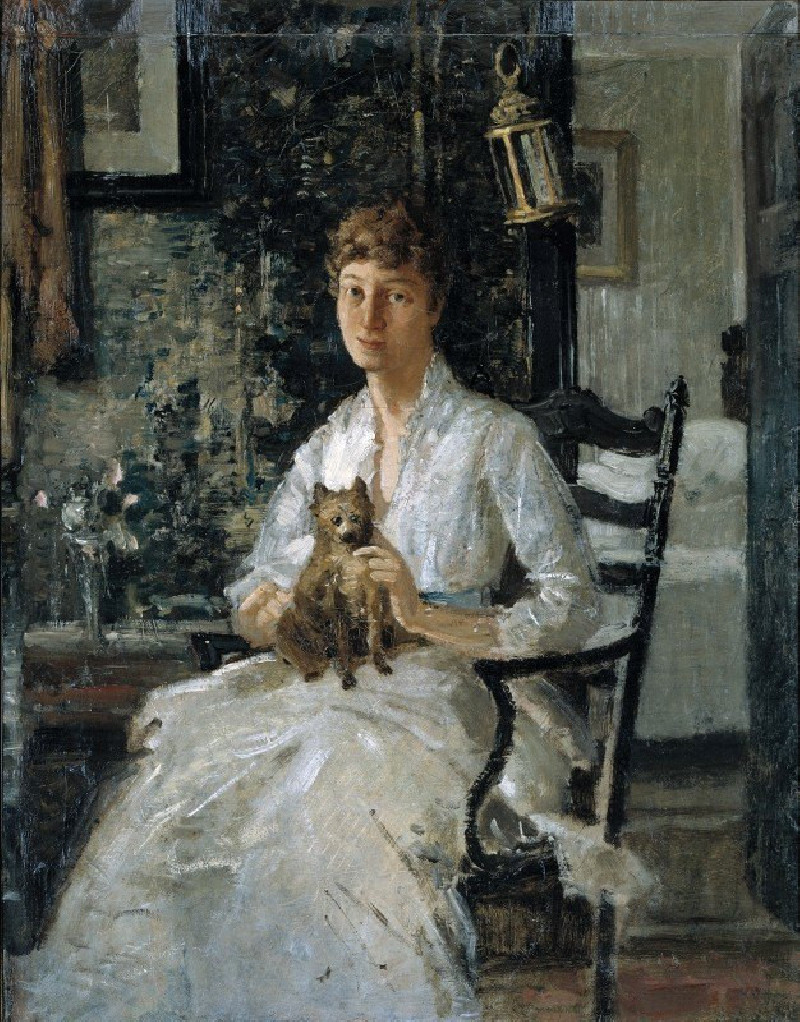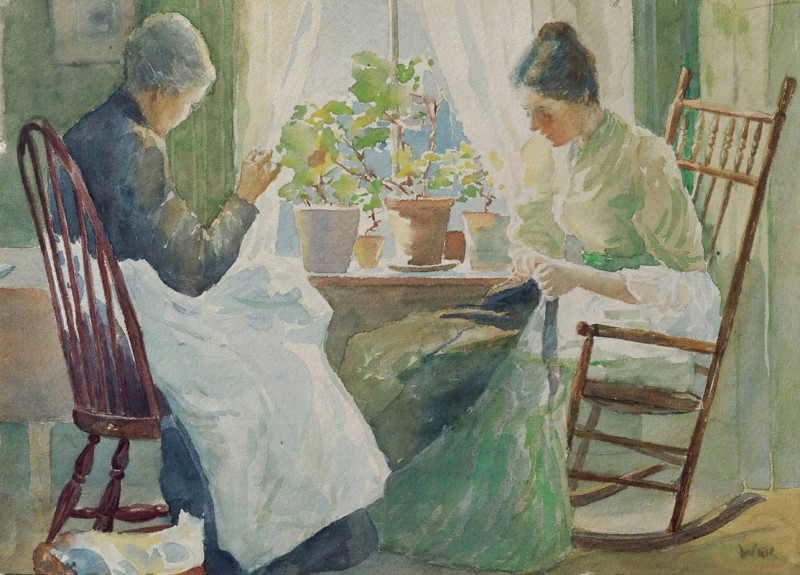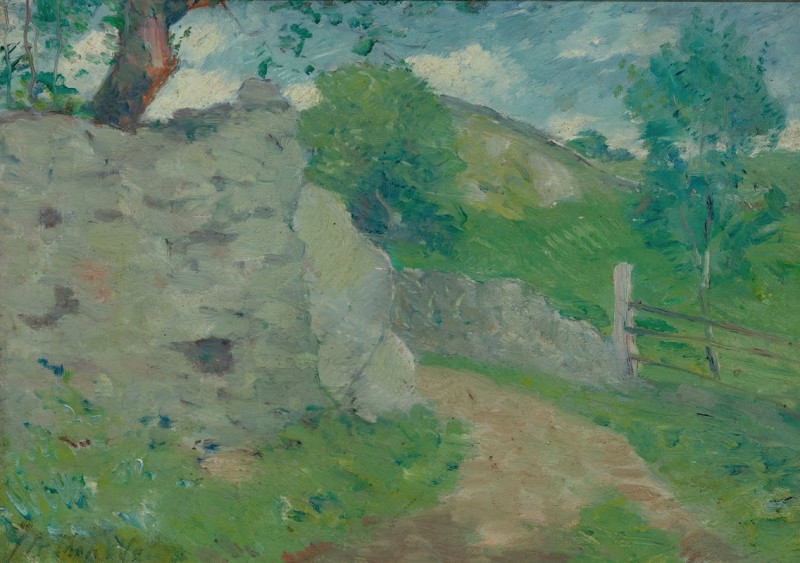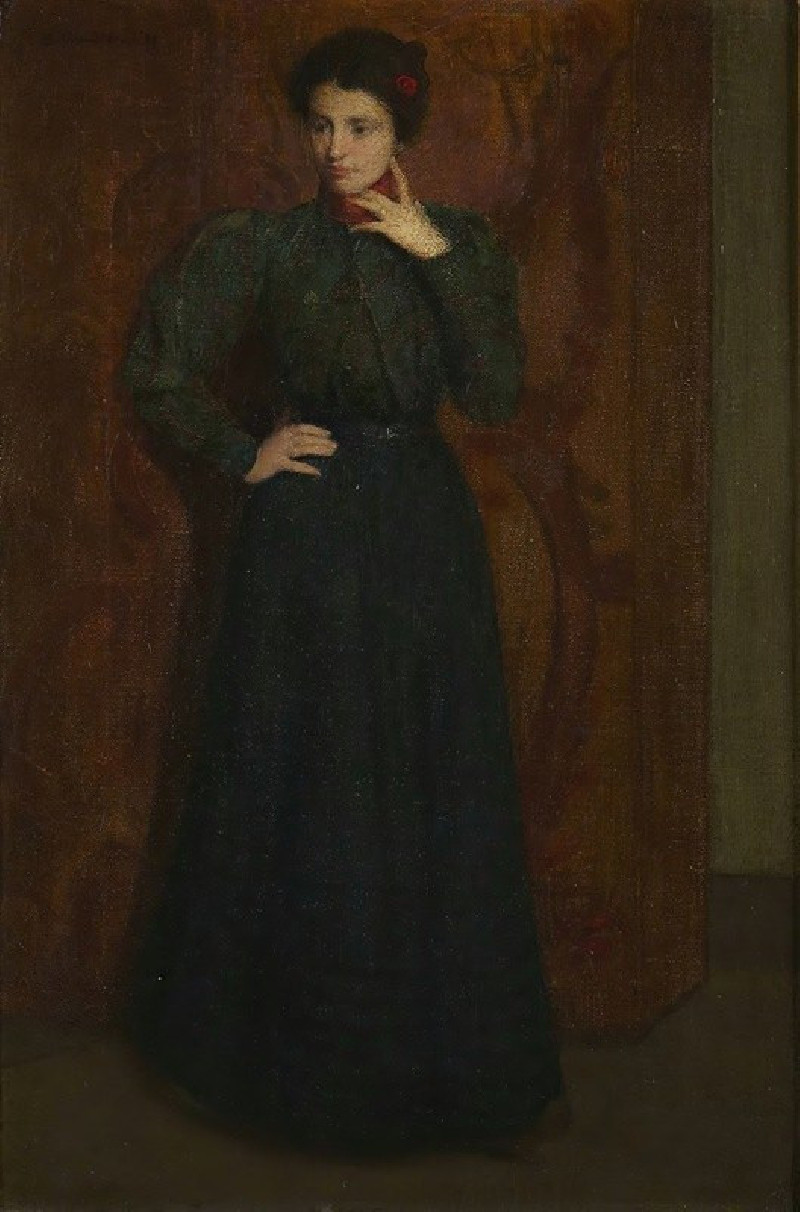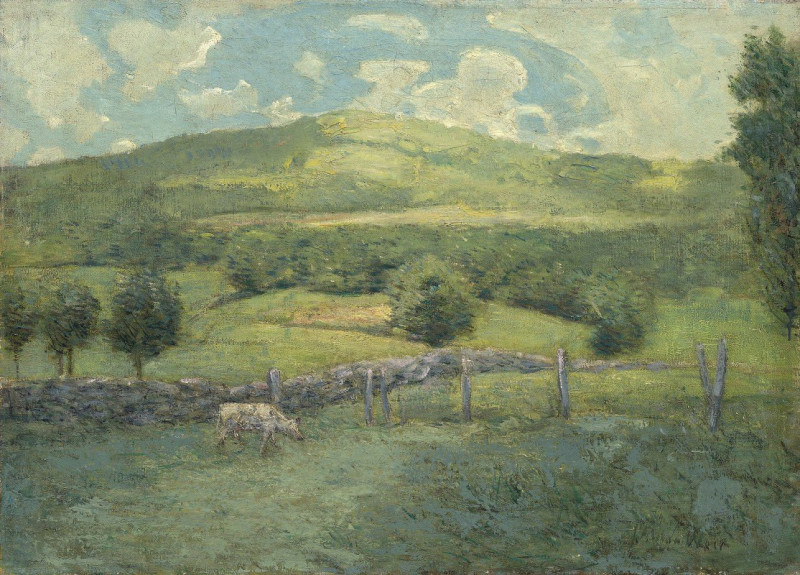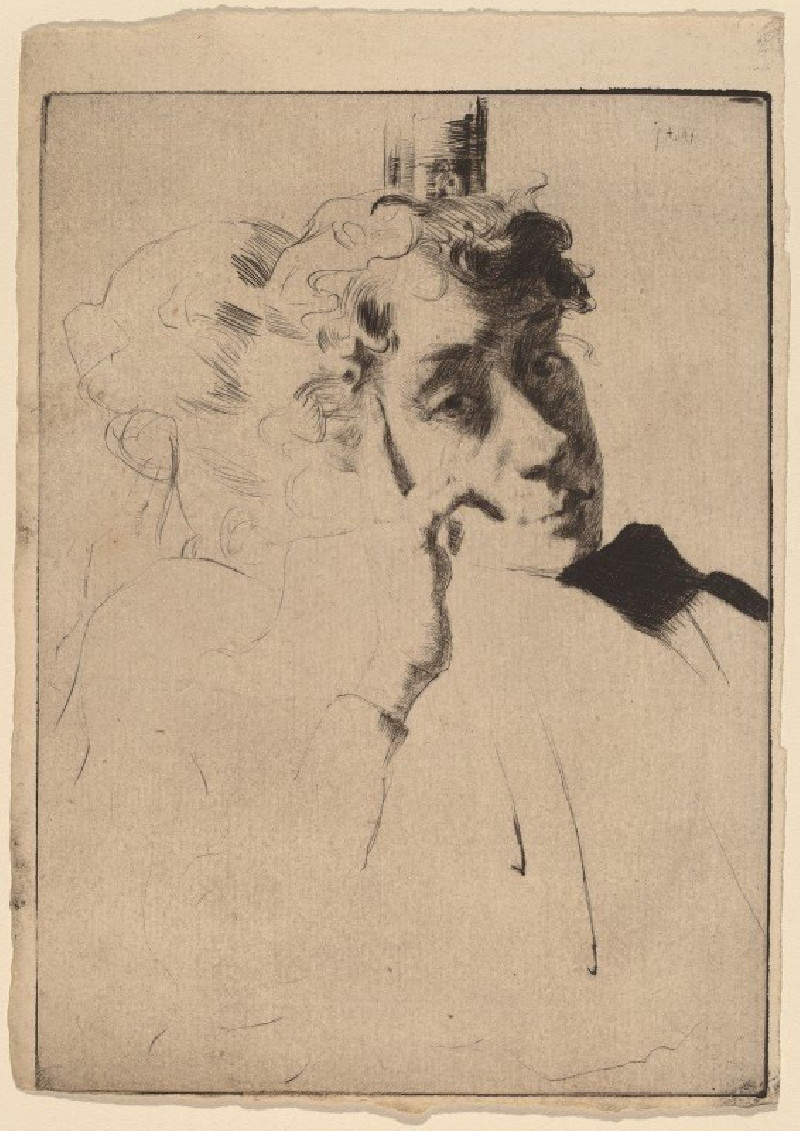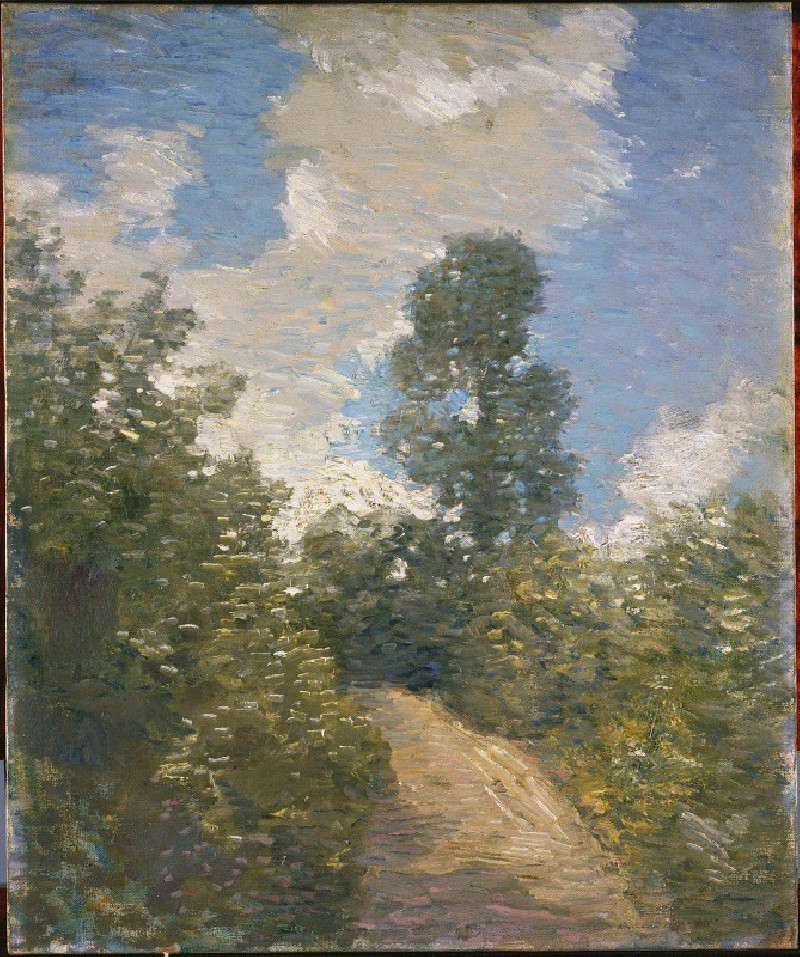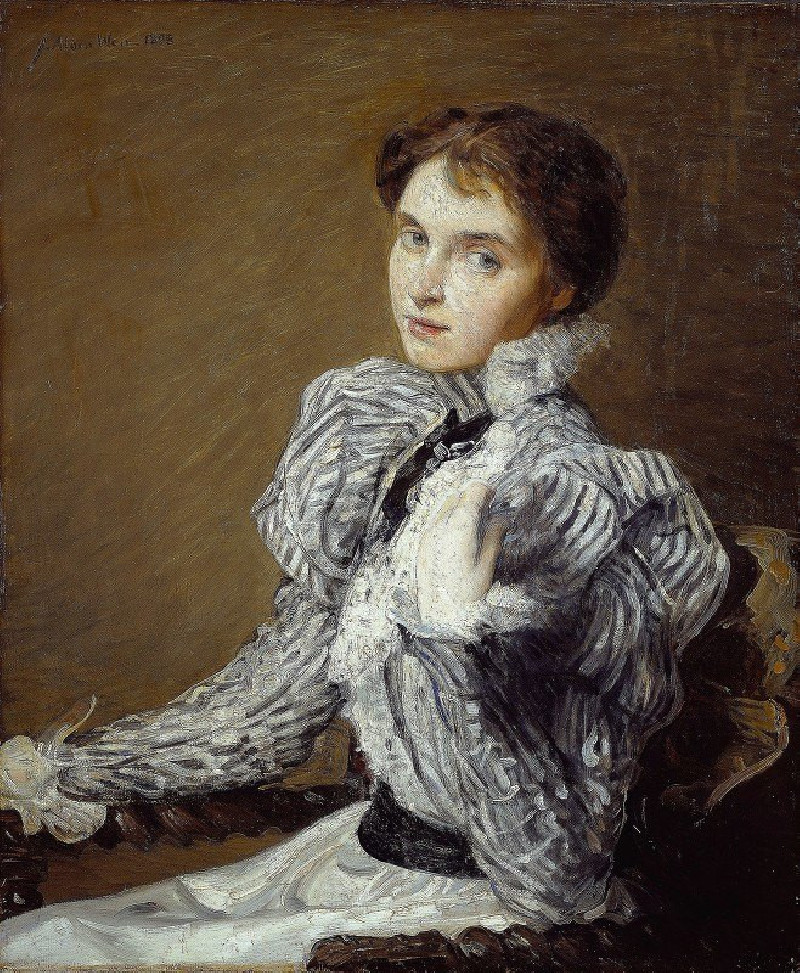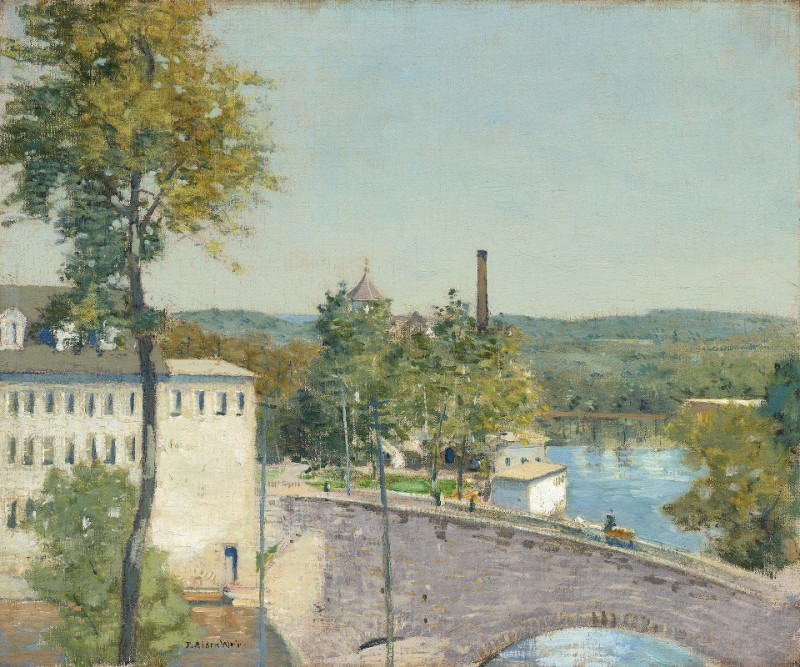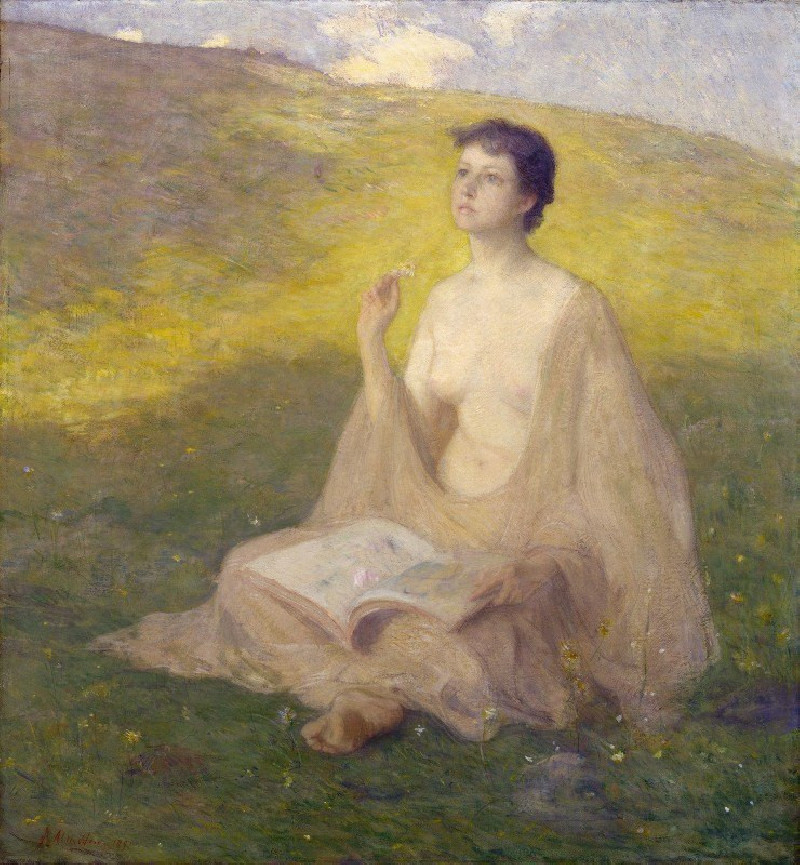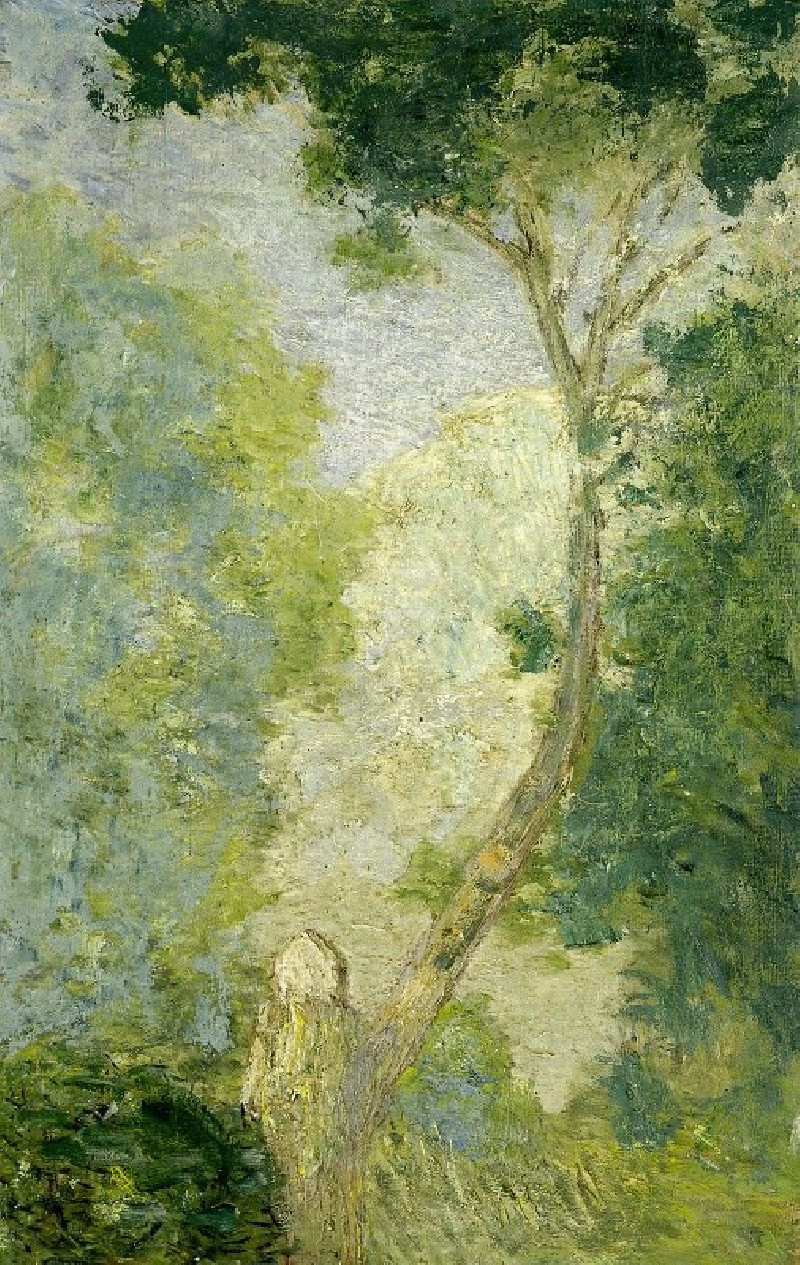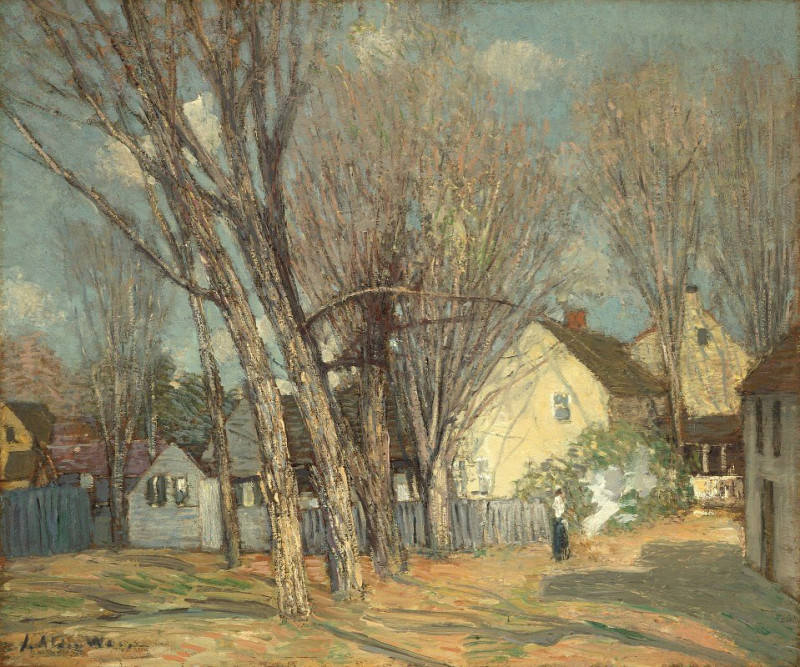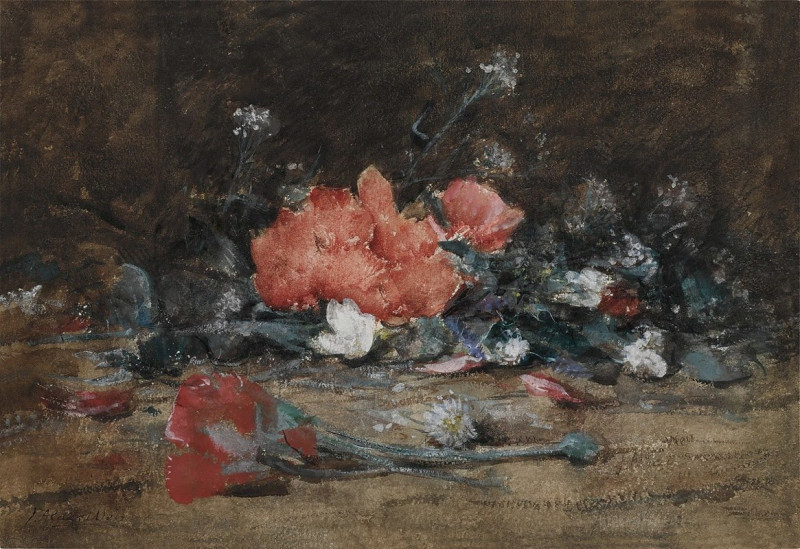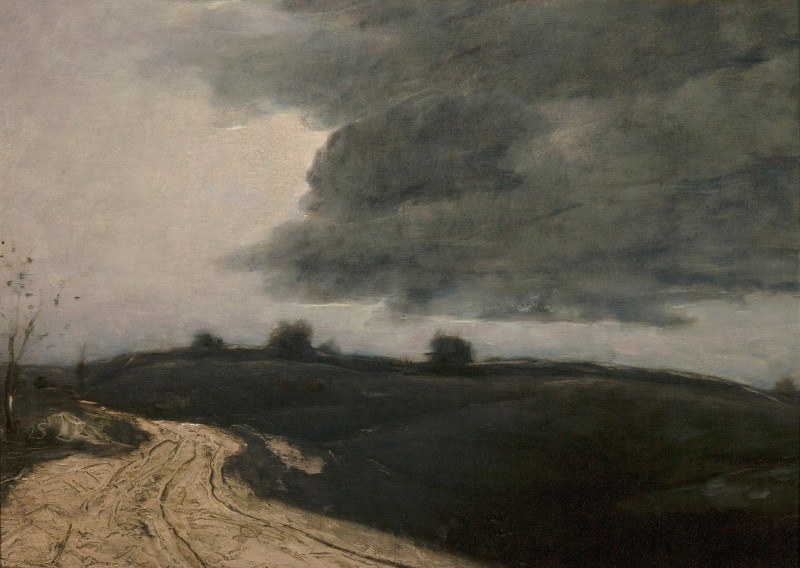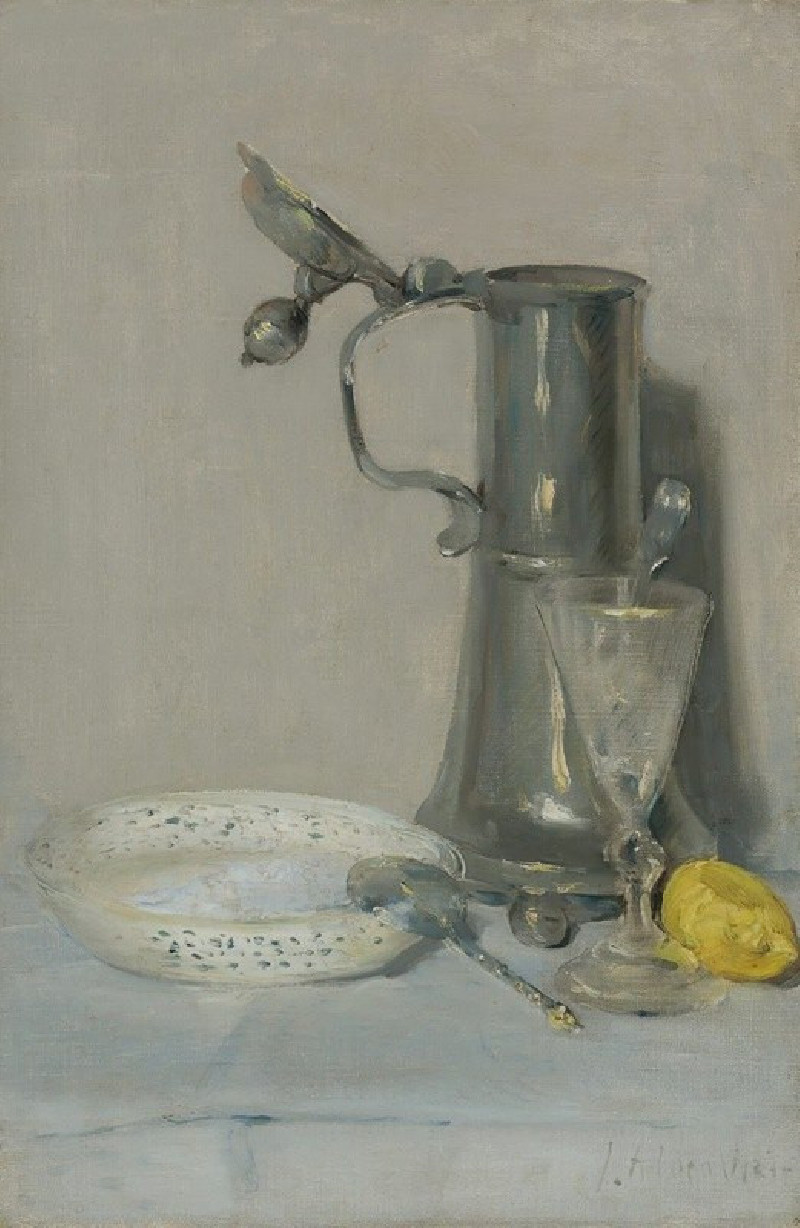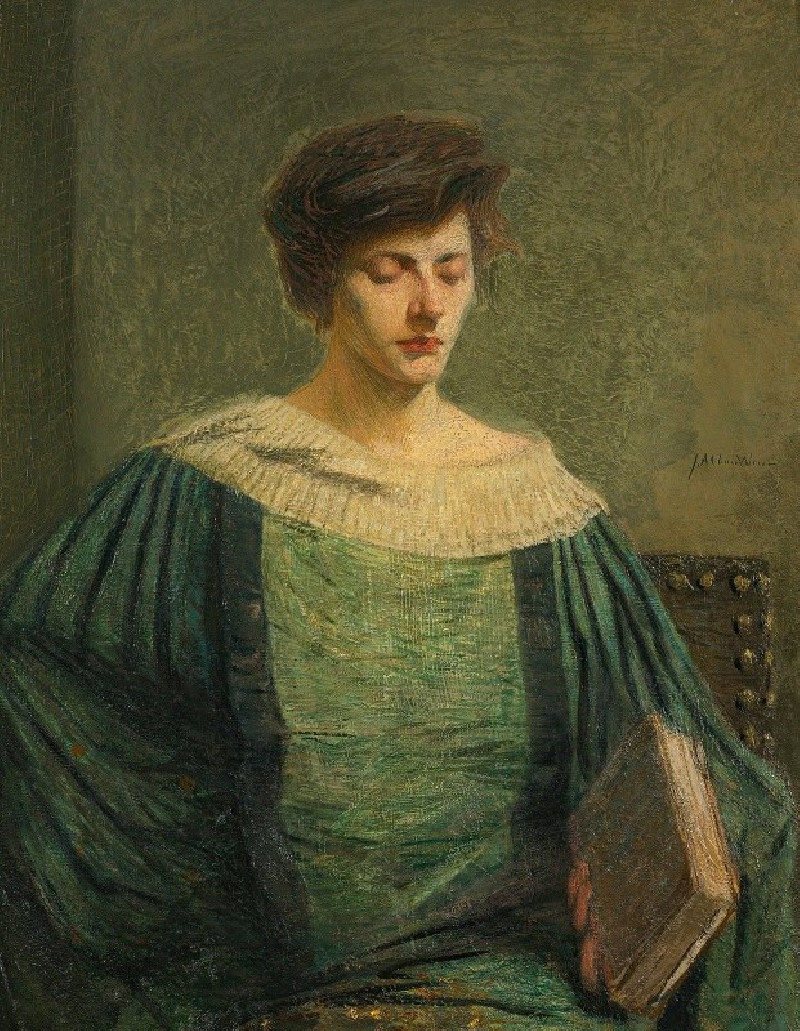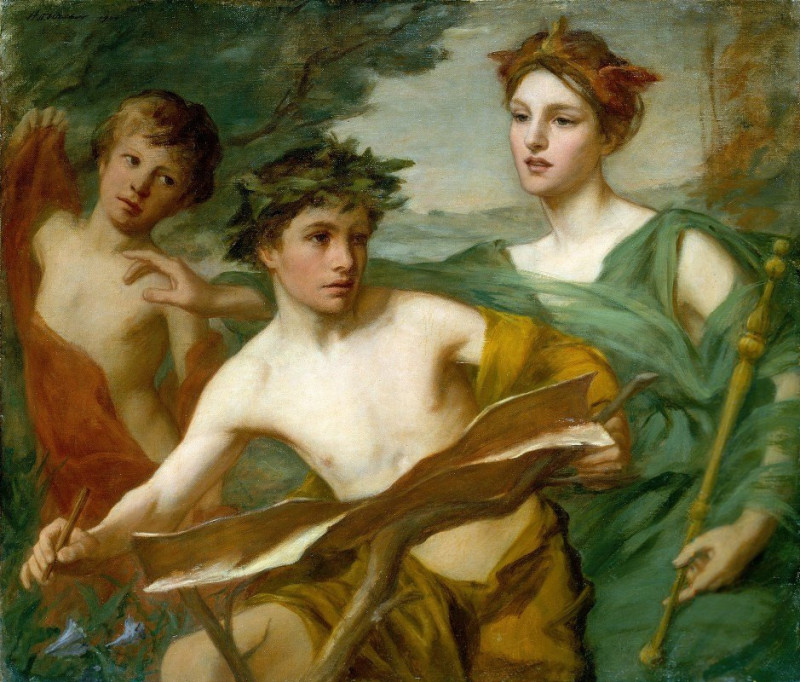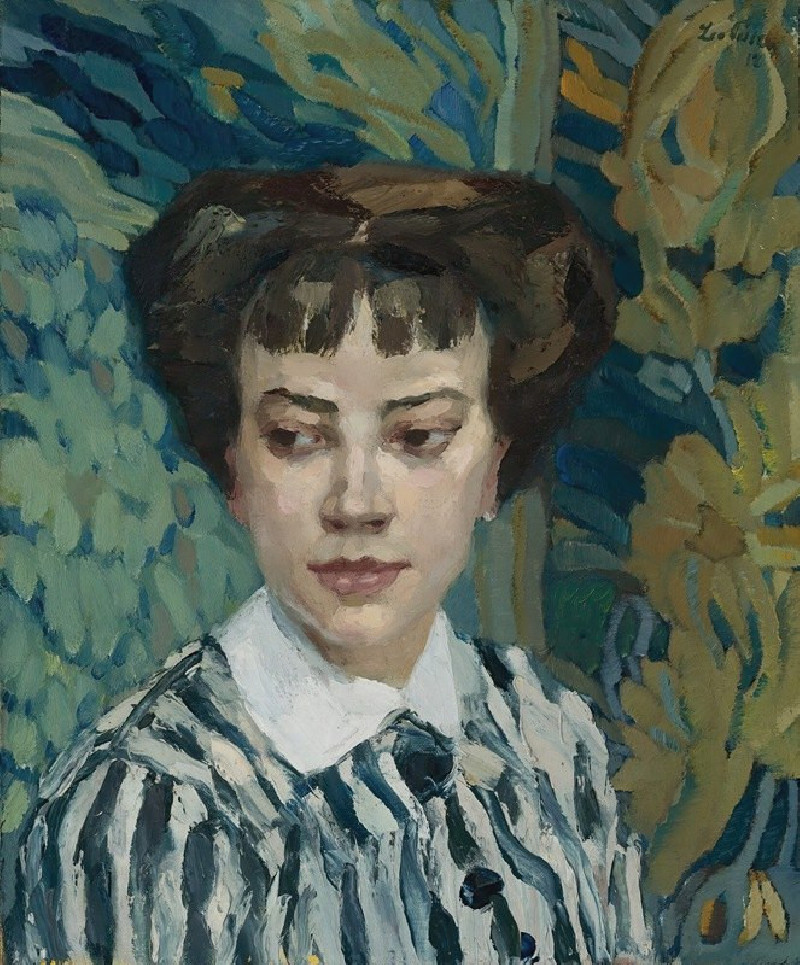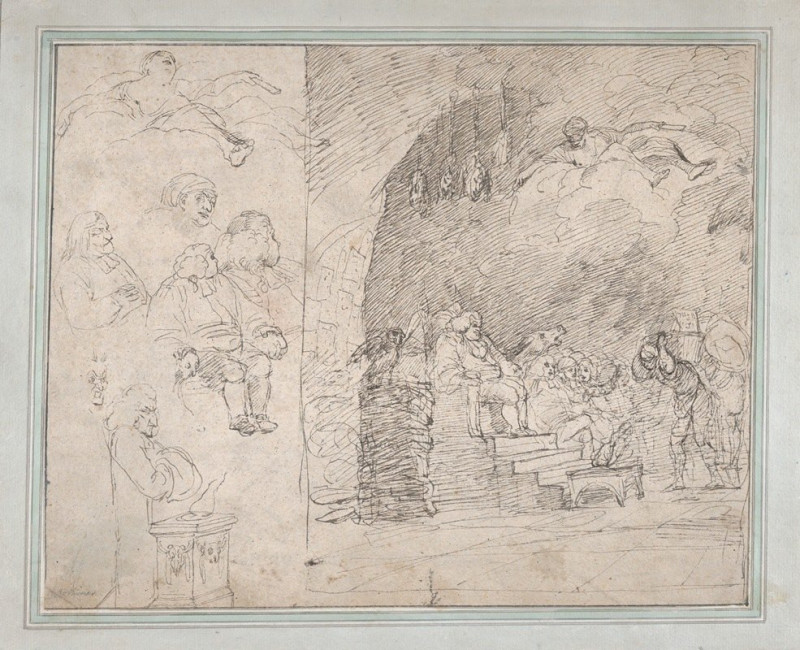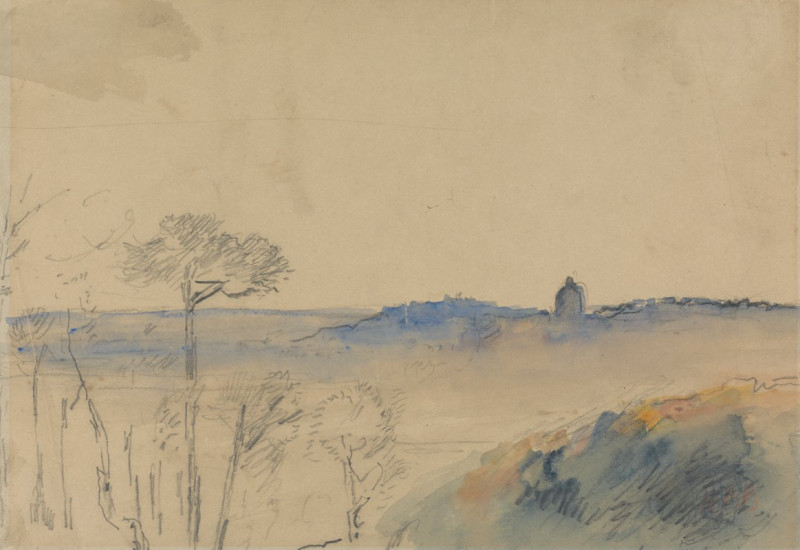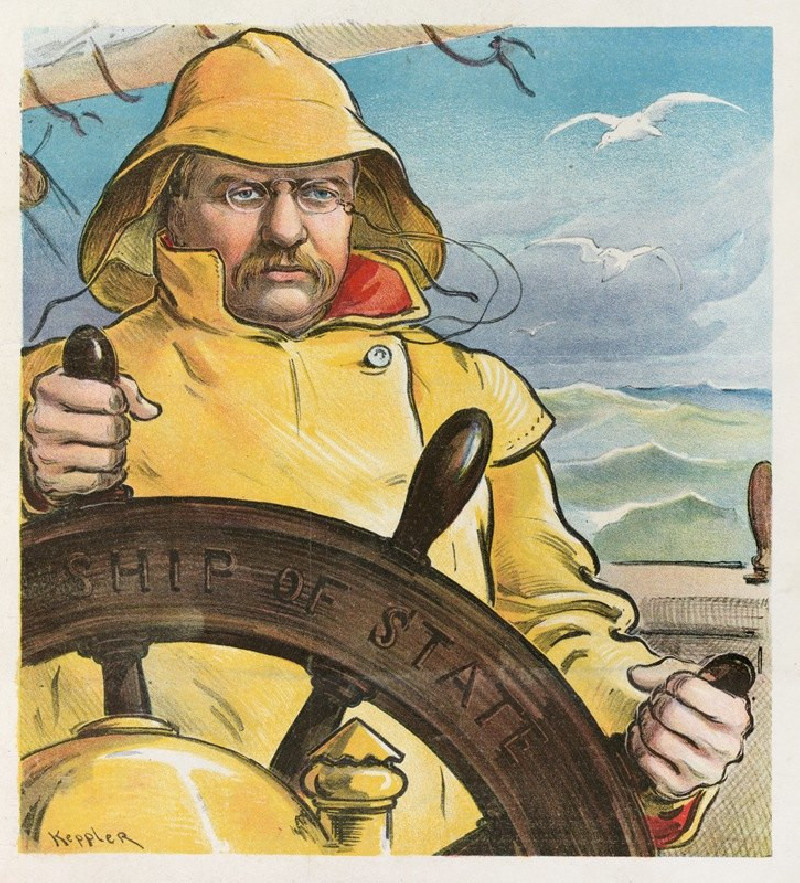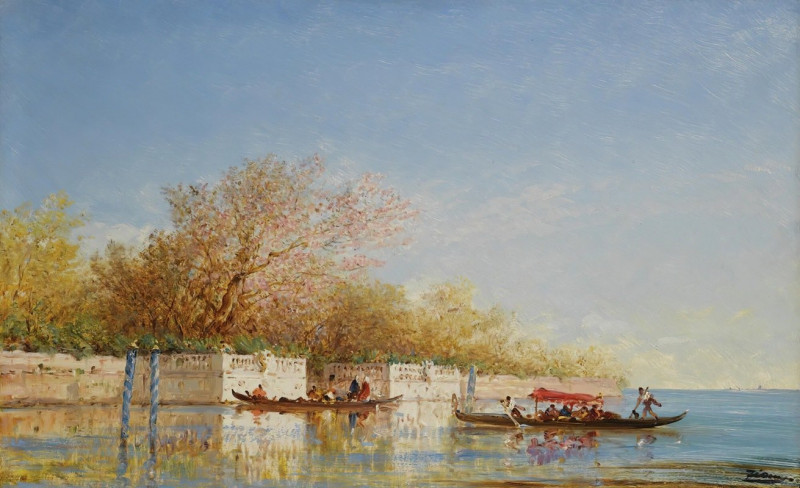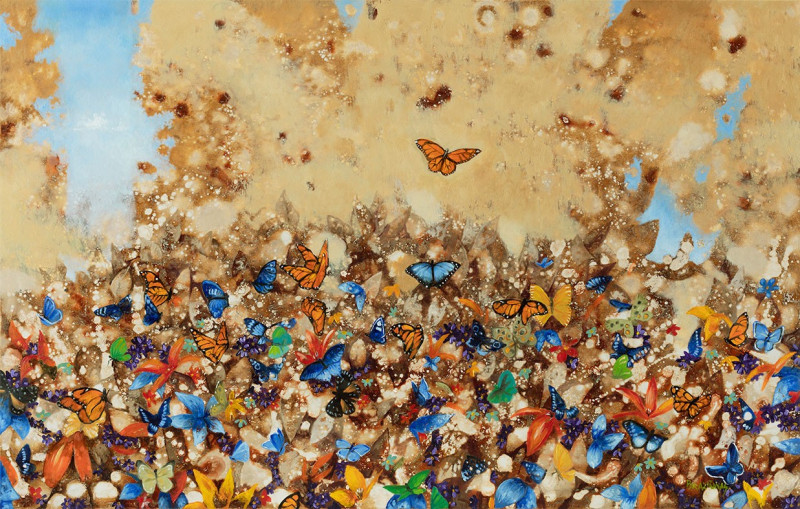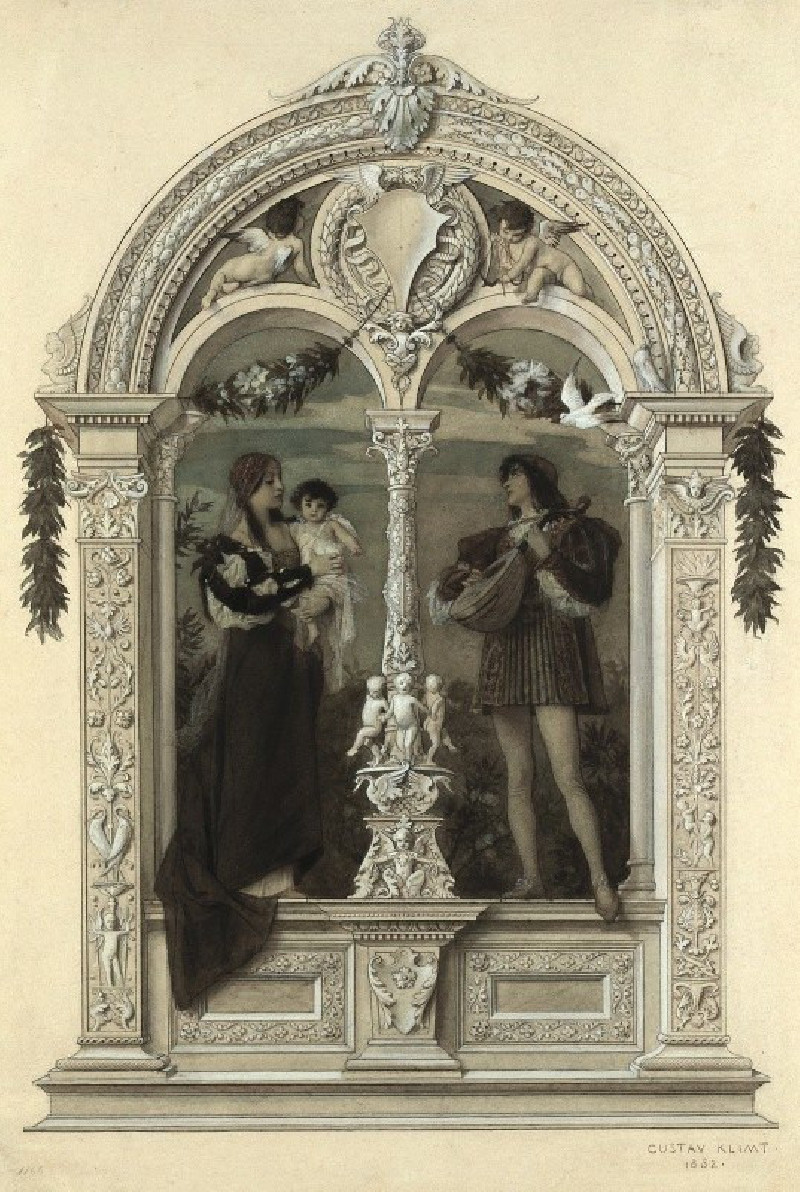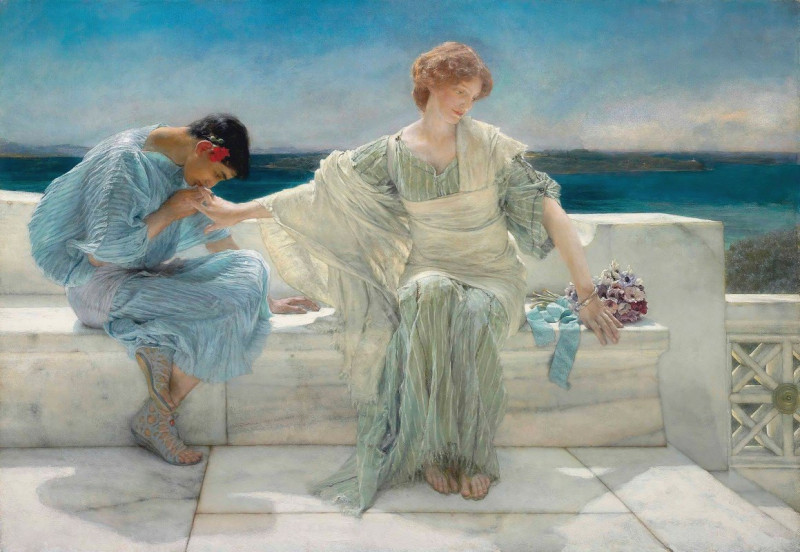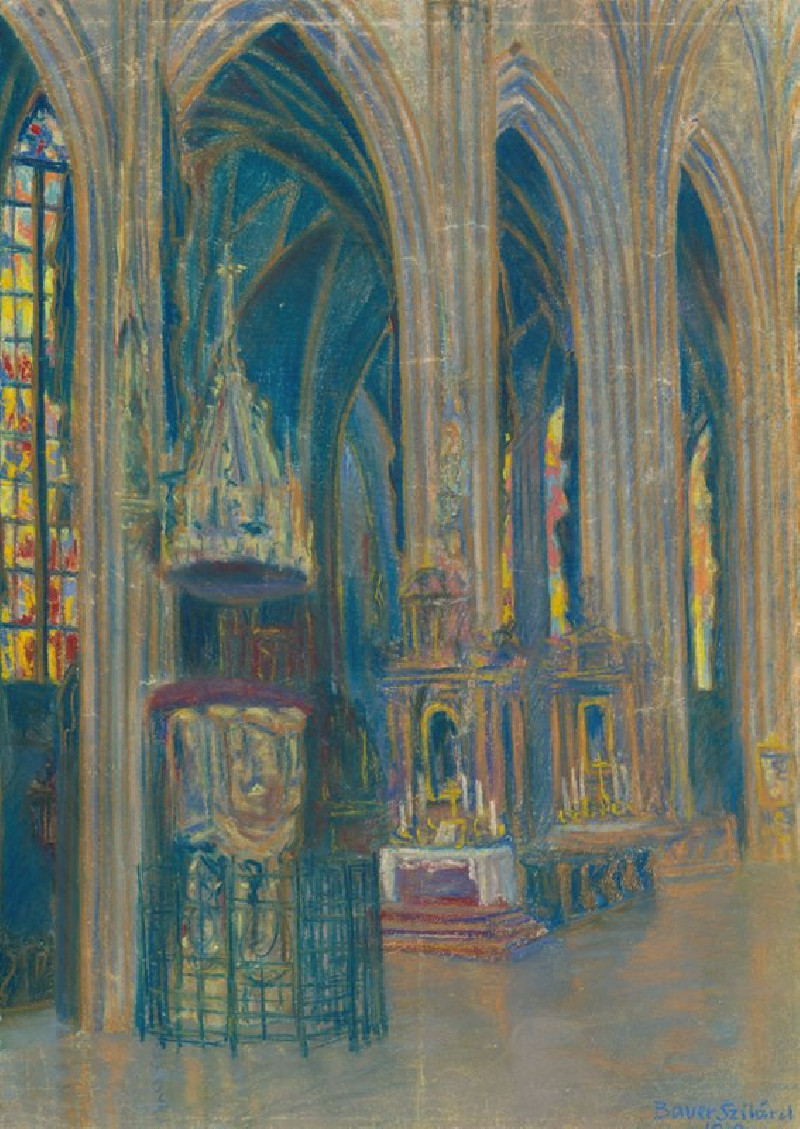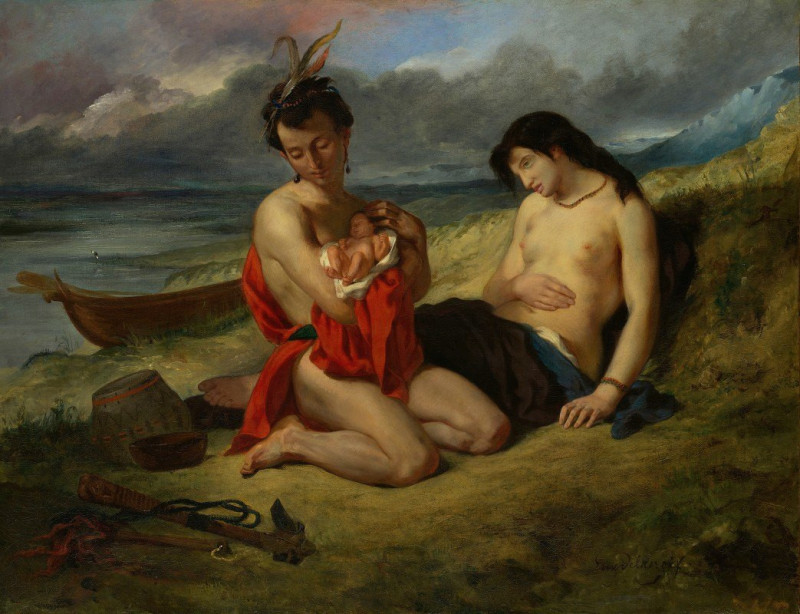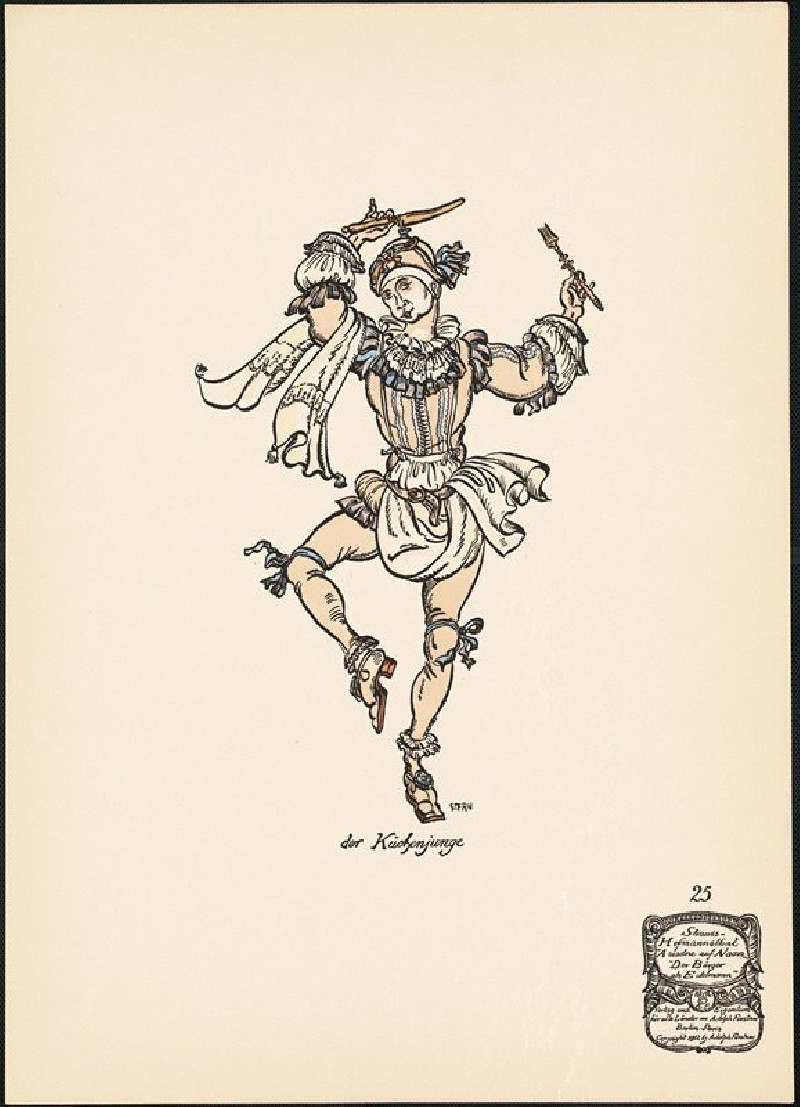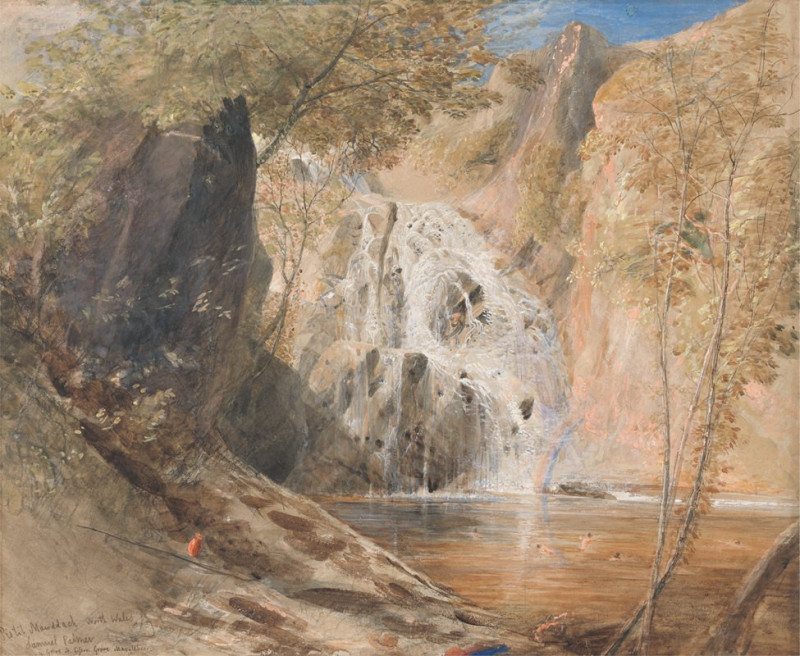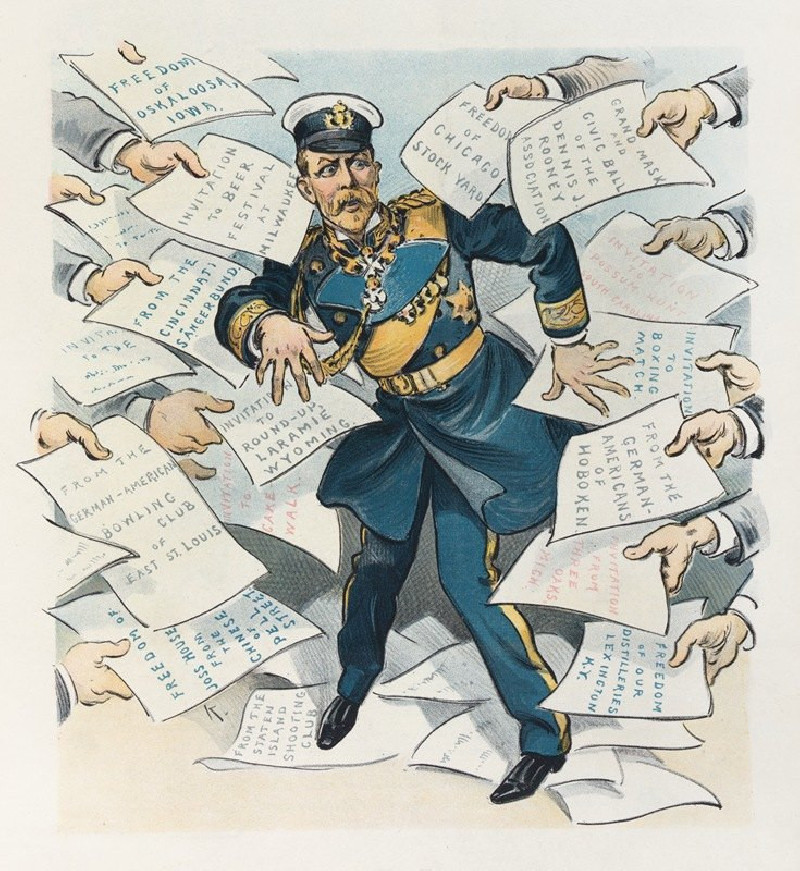Dutch Schnapps (1885-1893)
More about this artwork
Delivery
Returns
Julian Alden Weir was an American impressionist painter and member of the Cos Cob Art Colony near Greenwich, Connecticut. Weir was also one of the founding members of "The Ten", a loosely allied group of American artists dissatisfied with professional art organizations, who banded together in 1898 to exhibit their works as a stylistically unified group.
Weir was born on August 30, 1852, the second to last of sixteen children, and raised in West Point, New York. His father was painter Robert Walter Weir, a professor of drawing at the Military Academy at West Point who taught such artists as James Abbott McNeill Whistler. His older brother, John Ferguson Weir, also became a well-known landscape artist who painted in the styles of the Hudson River and Barbizon schools. He was professor of painting and design at Yale University from 1869, starting the first academic art program on an American campus.


